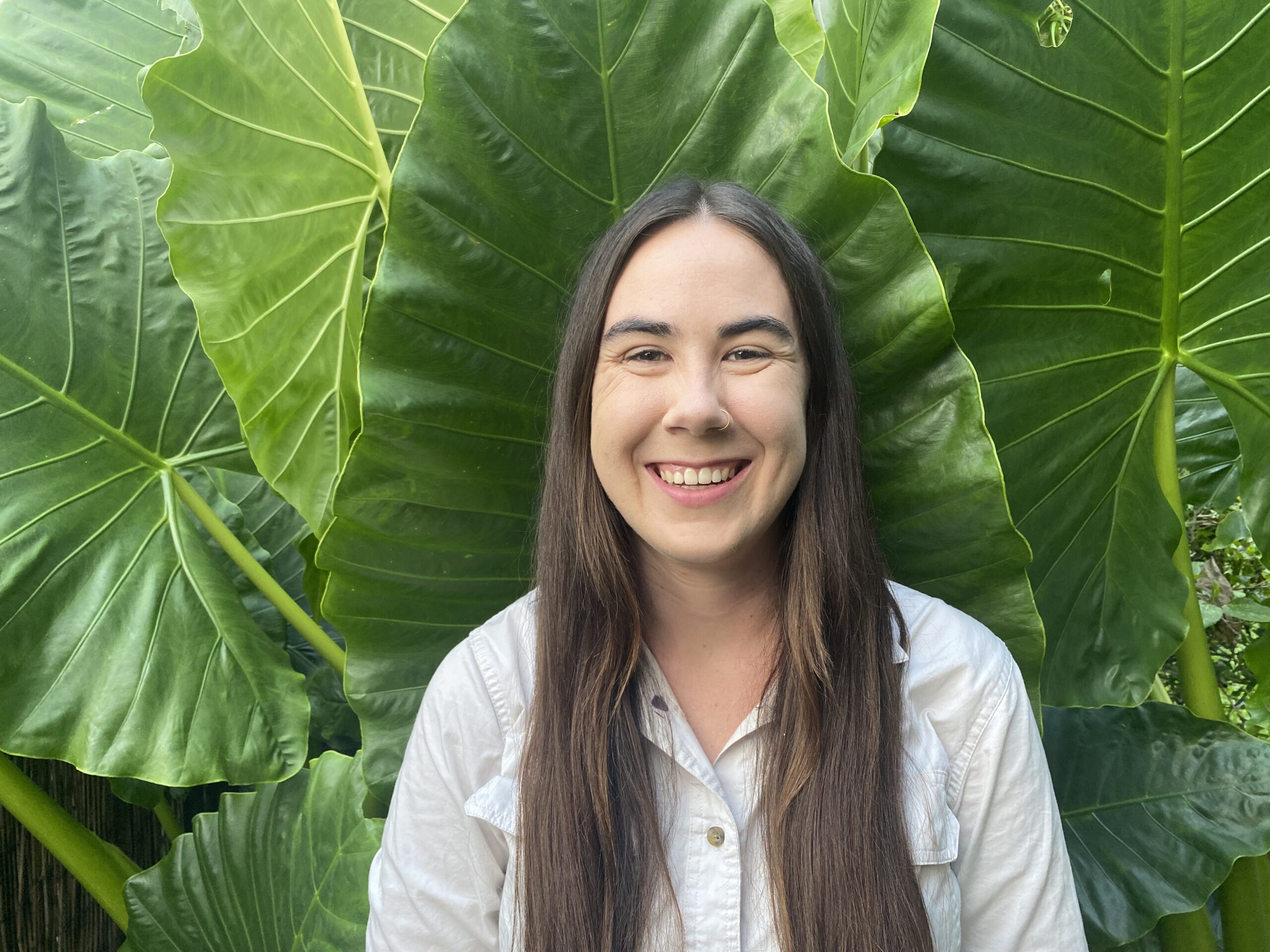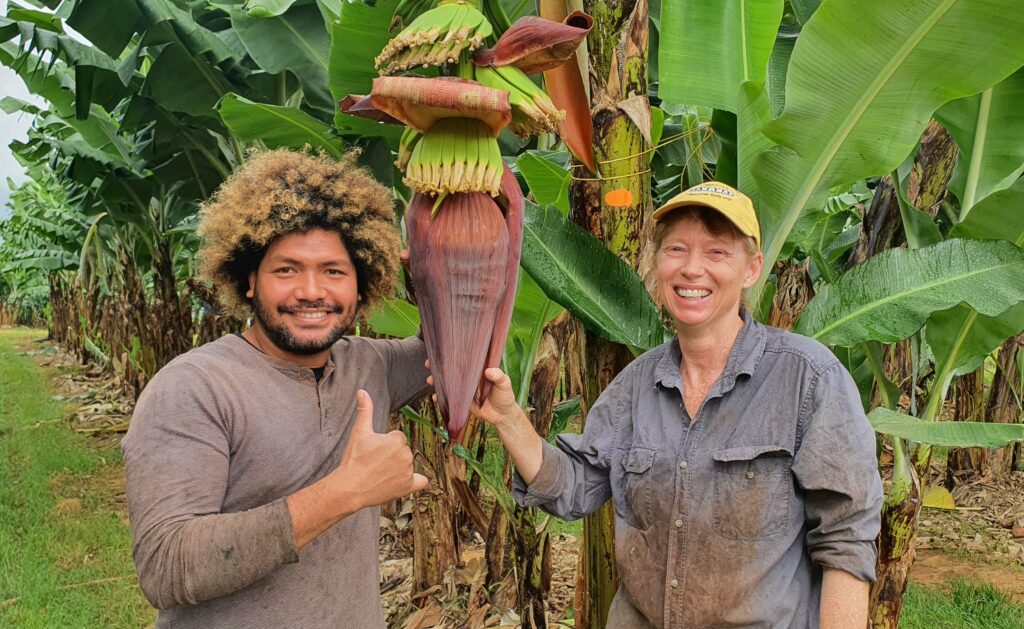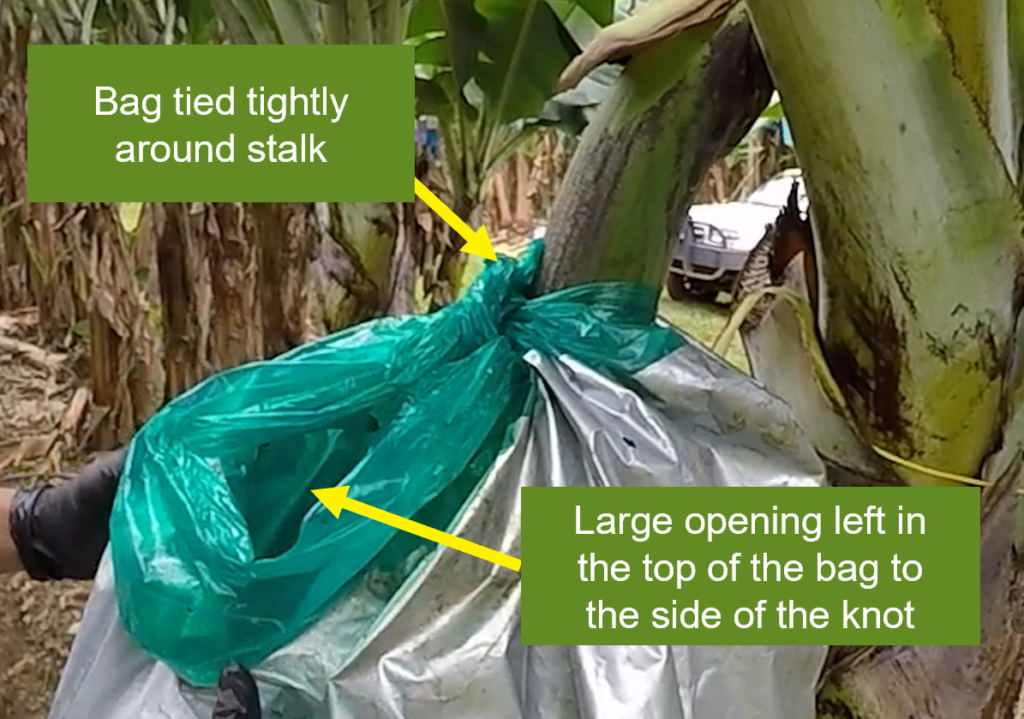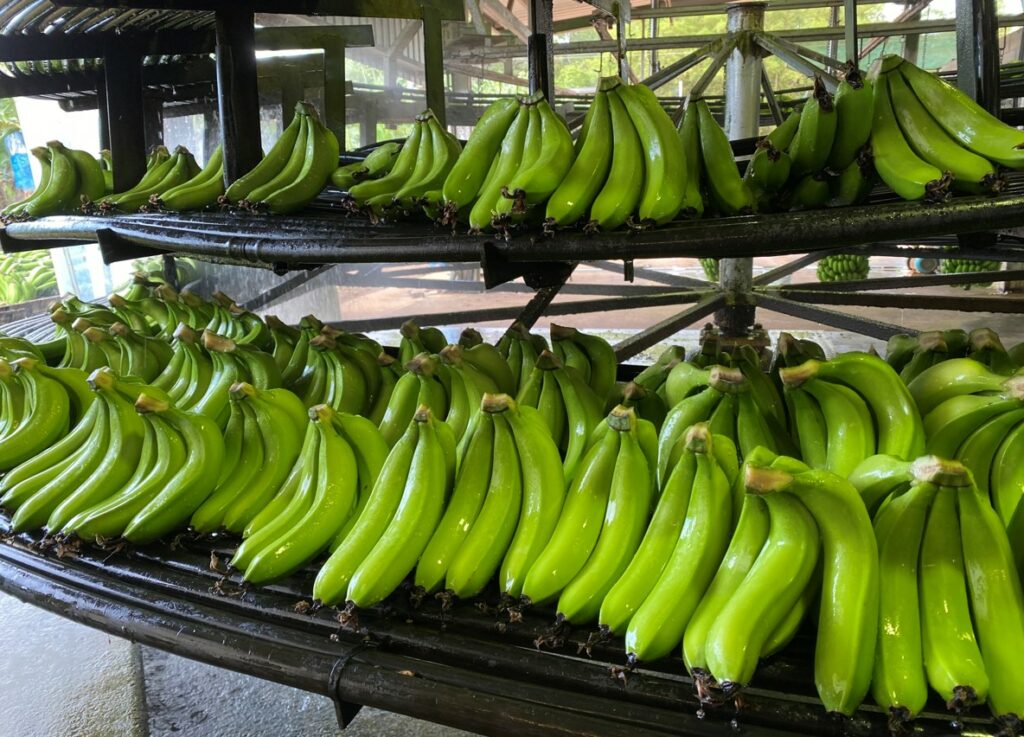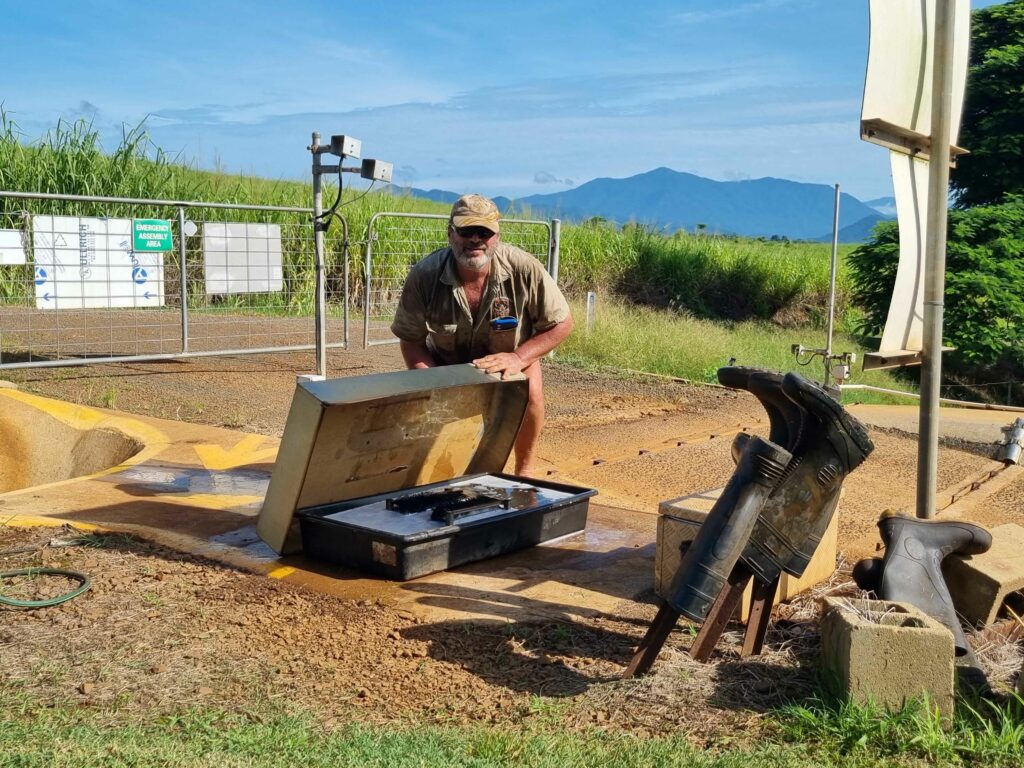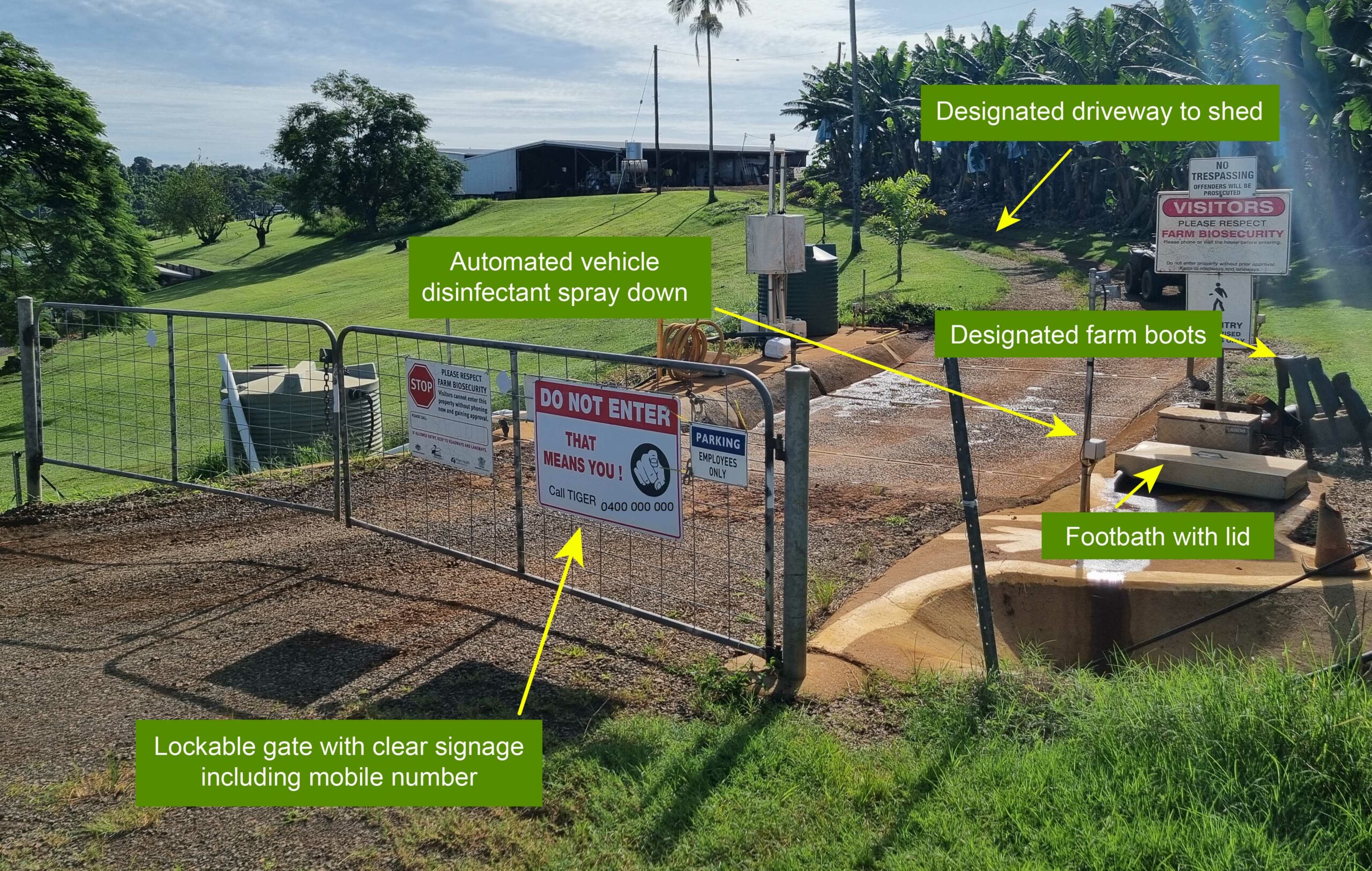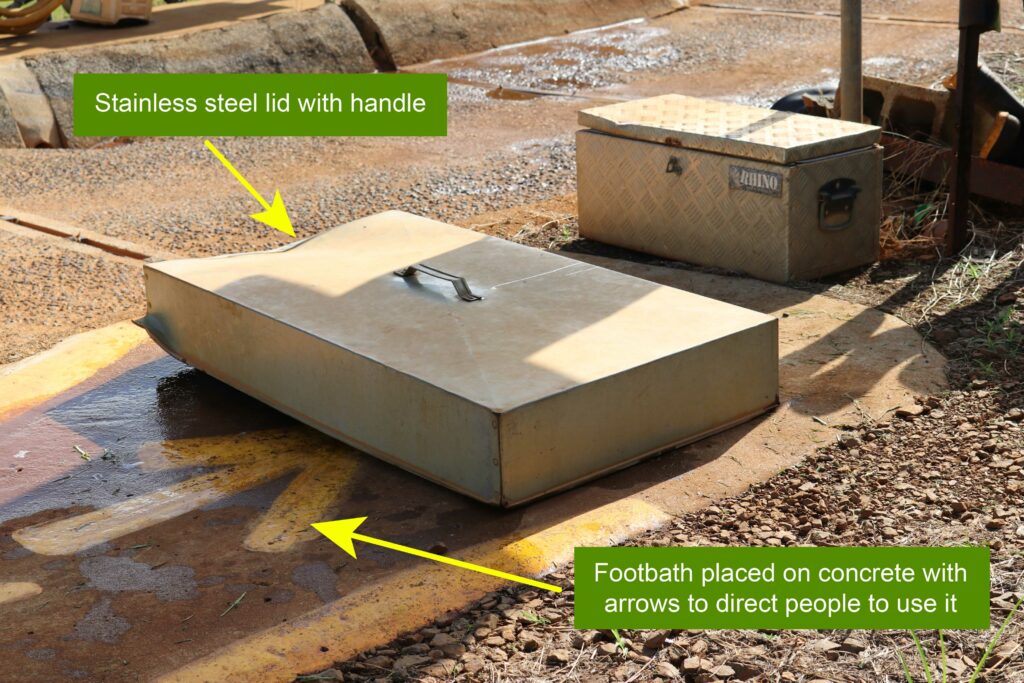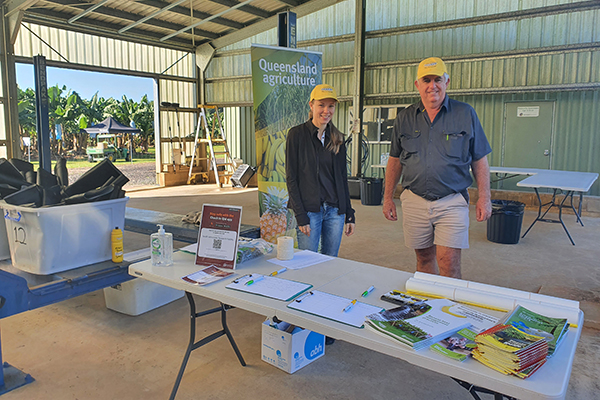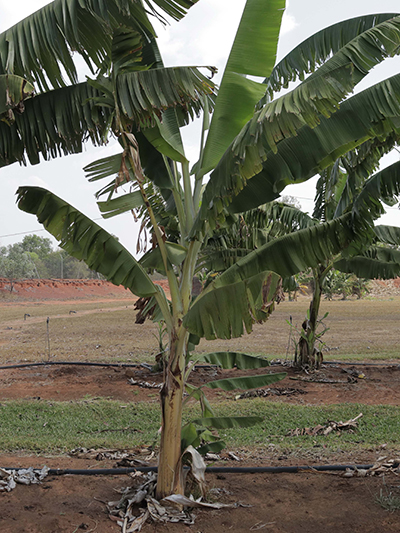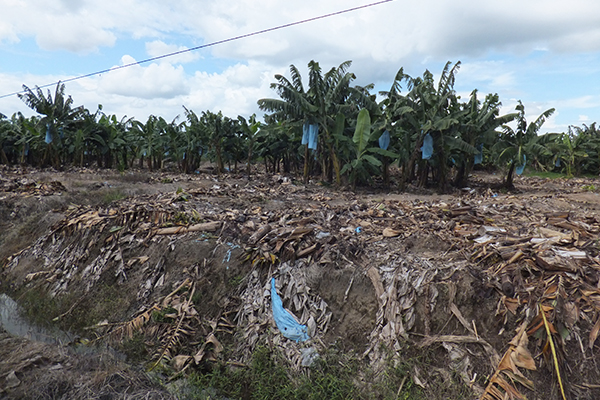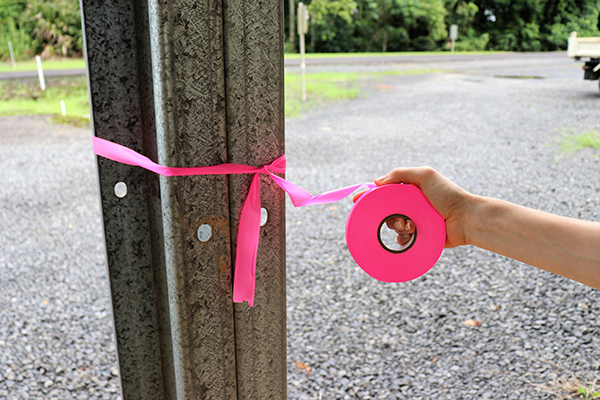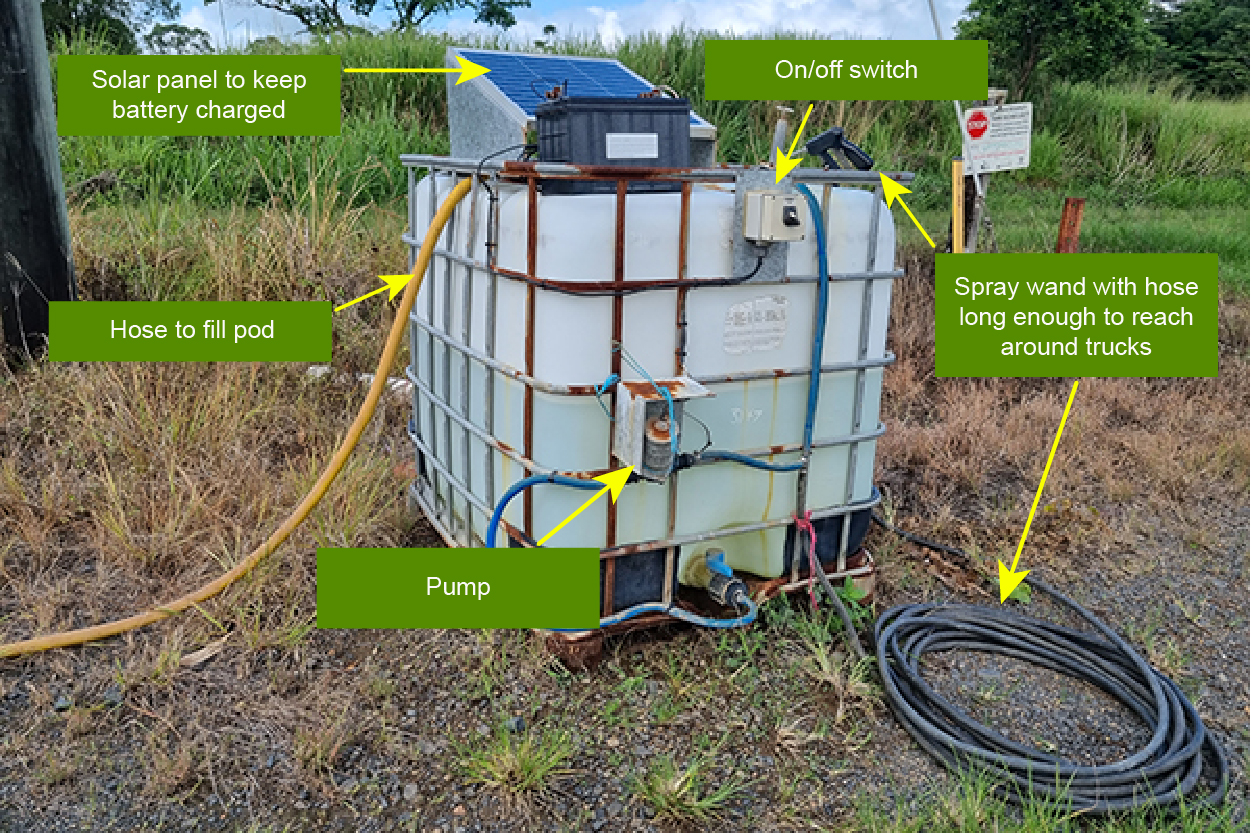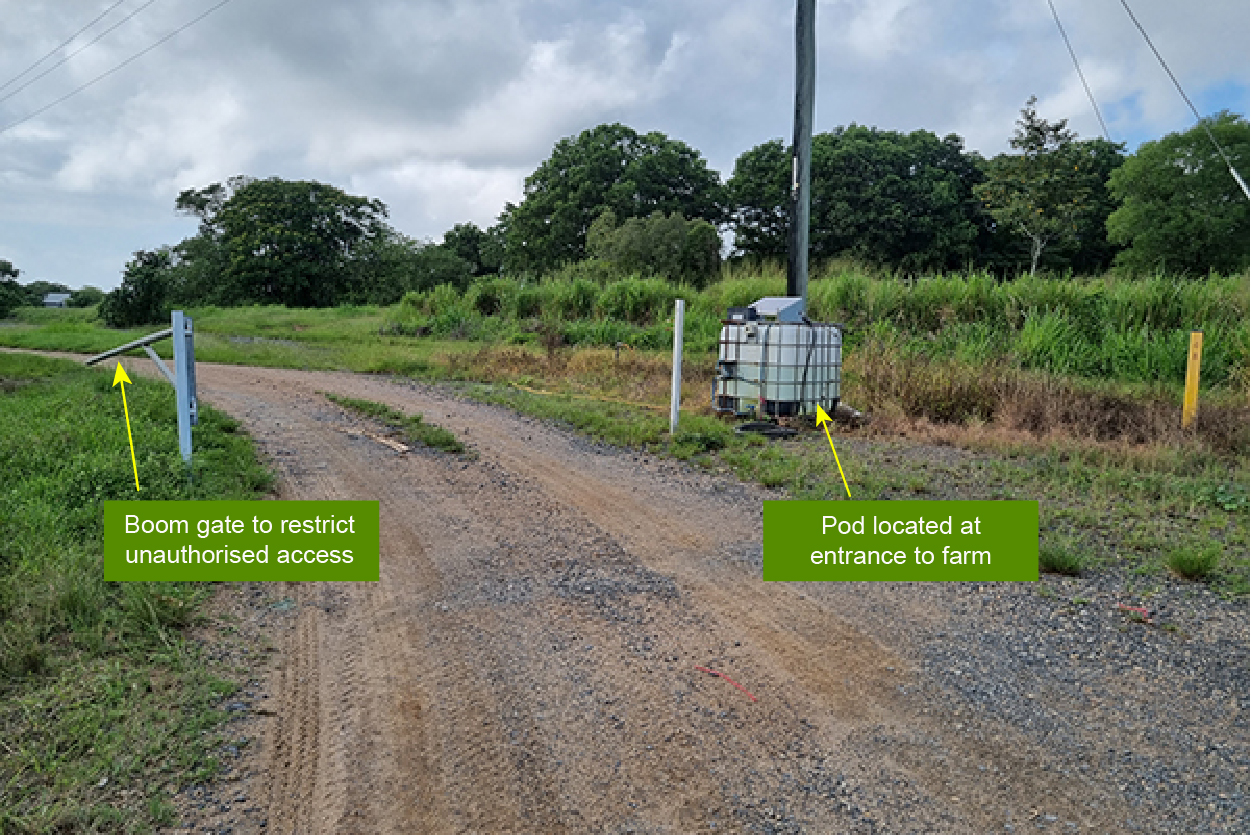‘We cut the supporting frame and the plastic liner down to 200 mm, the same as a normal step, so it was easy to step in and out of,’ the grower said. ‘We then placed a piece of expanded mesh in the bottom of the pod, mainly to prevent anyone slipping’, said the grower. ‘When we started using the pod as a footbath, we found that we had to protect the pod from the mesh with irrigation pipe so that it wouldn’t wear a hole in the plastic. We also put pipe on the edge of the pod to cover any sharp edges,’ the grower explained.
Positioning of any footbath is important. When you walk into the shed the pod is located between a shed wall and the bench seat where you change shoes before walking through the footbath. ‘The pod is also good as it is long enough and wide enough that it is difficult to step over and you need to put both feet in,’ the grower said. There are also signs to direct people to use the footbath.
‘Another point with using a pod is that it comes with a built-in valve, making it easy to drain and clean. If we want to shift the pod for cleaning, we can do that with our forklift,’ said the grower.
Overall, the grower said, ‘We have found that if you make biosecurity easy to do, practices will be followed’.


